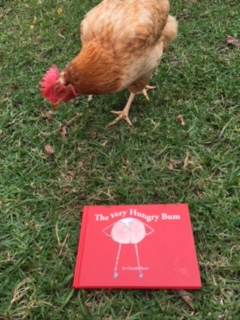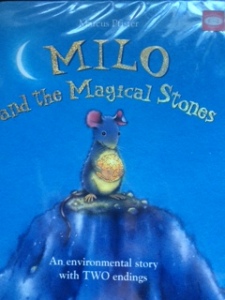I love this book so much! Luckily my children love it to so I can read it to them over and over.

What would you do if you had a bum that was so hungry it would eat not only your underpants but sleeping bags, butterflies and tennis racquets? That’s one of the many great questions we can use when reading this book.
But why am I linking this into my blog on books about sustainability? Well humour can get us a long long way and while many environmental books are hopeful they are often quite sad too.
I have really wanted to blog about this book as I feel that the issue of bums eating underpants is a major issue!
Just recently clothes have started to become cheaper and cheaper and becuase of this we have become more of a throwaway society, not worrying if a shirt rips after one use as it was only $5. These clothes are ending up in landfill too quickly and too easily. We need to make more of a conscious effort.
So how can reading this book inspire thought in you and your children or students?
- Look at how clothes are made. Choose an item of clothing in your house, see what it is made from and then research this material or item.
- Map on the world where all the clothes in your house come from – this will raise an interesting discussion. Can you change this somehow?
- How is a pair of underpants made? Guess how it is sewn together, how pictures are placed on these and what the material is made of. Research and check your hypothesis.
- How can we ensure clothes last? Look at the types of materials that last longer by using some websites of companies whose aim is to make clothes that last forever such as: http://www.buymeonce.com/clothes/ and http://textilebeat.com/category/clothing-waste/
- Is it really cheaper to buy cheap clothes that need to be replaced more often? Use clothing catalogues of cheap store and then add up the price of a different items and compare to a more ethical brand. Ask your child what they think is the best outcome for the long term? What would they prefer? There are many arguments for and against but try to keep in mind being sustainable!
- Research Australian companies that have cheap, throwaway goods. Find out their ethical statements about impact on the environment. Do you really think they are following through with this? Write them an email to them to ask further questions.
- How are clothes made or how were they made in more traditional societies or in the past?
- CREATE: How can we use these goods when they are no longer able to be used for their original use? Look at Reverse Garbage and upcycle projects to create some ideas. Create your own new item from old clothes and plastic objects.
- Literacy: Parodies – what are they and how have they been used? Create your own parody of a well known book (see the others Claudia Rowe has!)
LINKS TO THE CURRICULUM
SCIENCE
Different materials can be combined for a particular purpose (ACSSU031)
Natural and processed materials have a range of physical properties that can influence their use (ACSSU074)
DESIGN AND TECHNOLOGY
Recognise the role of people in design and technologies occupations and explore factors, including sustainability that impact on the design of products, services and environments to meet community needs (ACTDEK010)
Investigate food and fibre production and food technologies used in modern and traditional societies (ACTDEK012)
Examine how people in design and technologies occupations address competing considerations, including sustainability in the design of products, services, and environments for current and future use (ACTDEK019)
Critique needs or opportunities for designing, and investigate materials, components, tools, equipment and processes to achieve intended designed solutions (ACTDEP024)
SUSTAINABILITY
OI.6 The sustainability of ecological, social and economic systems is achieved through informed individual and community action that values local and global equity and fairness across generations into the future.
OI.7 Actions for a more sustainable future reflect values of care, respect and responsibility, and require us to explore and understand environments.
OI.8 Designing action for sustainability requires an evaluation of past practices, the assessment of scientific and technological developments, and balanced judgements based on projected future economic, social and environmental impacts.
OI.9 Sustainable futures result from actions designed to preserve and/or restore the quality and uniqueness of environments.


